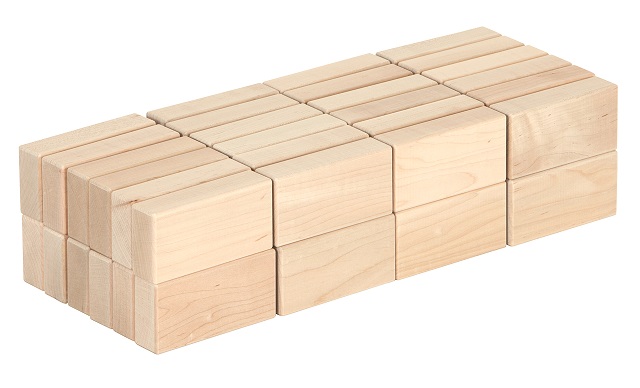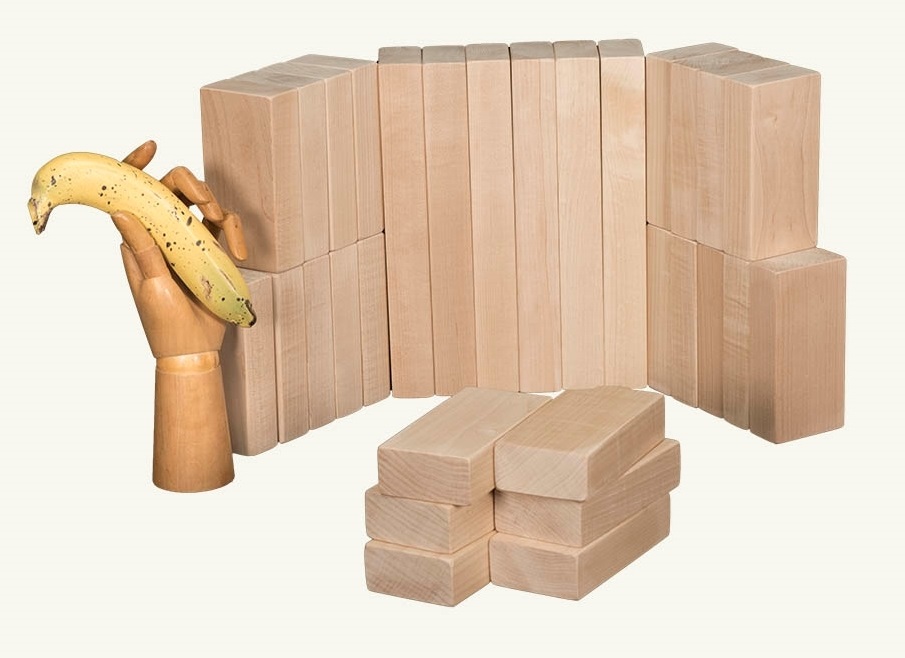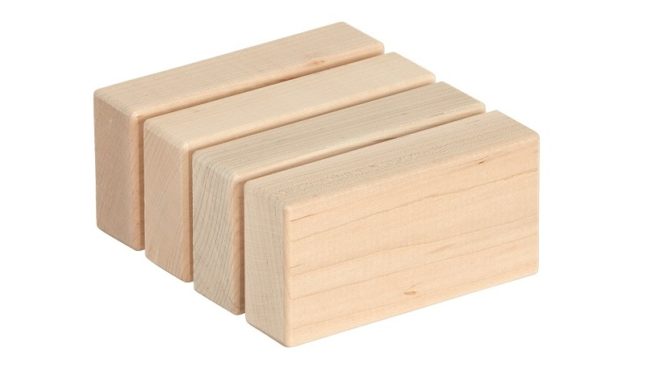Children play to construct their knowledge about the world and reconstruct their experiences.
A child begins to put blocks together and match them. Stacking one block on top of another is the first step in building.
Children love to play with their parents and make things together.
From 3 to 5 years old, children begin to make things, which need more blocks.

Carline Pratt designed unit blocks by based on the shapes of play gifts created by Friedrich Froebel, the originator of kindergarten education.
The City and Country School in the Greenwich Village of New York City was founded in 1913 by Carline Pratt, based on the child-centered approach to education of Friedrich Froebel.
The curriculum of the City and Country School was drawn from the environment of the child: observations about the neighborhood inspired each child to reflect on their world directly so that they could make sense of their experiences.

sources:
- How do unit blocks help children learn?
- Pratt, Caroline (1948). I Learn From Children. New York: Perennial Library/HarperCollins. ISBN 0060972734
- Hauser, Mary E. (2006). Learning from Children: The Life and Legacy of Caroline Pratt. New York: Peter Lang. pp. 44–49. ISBN 0820467510
